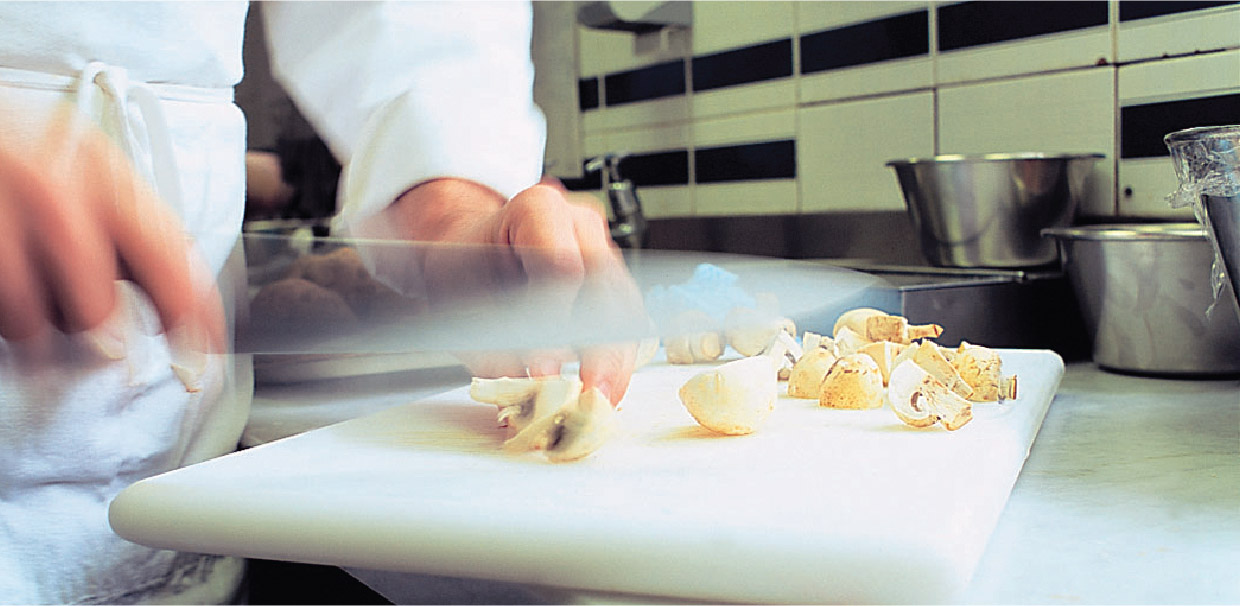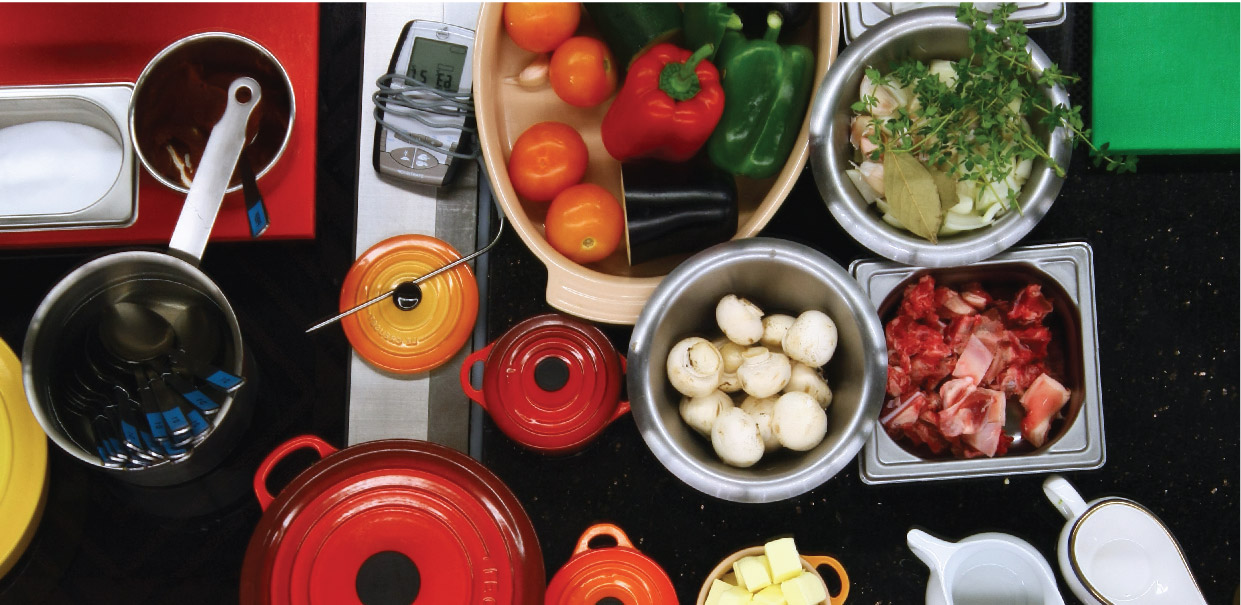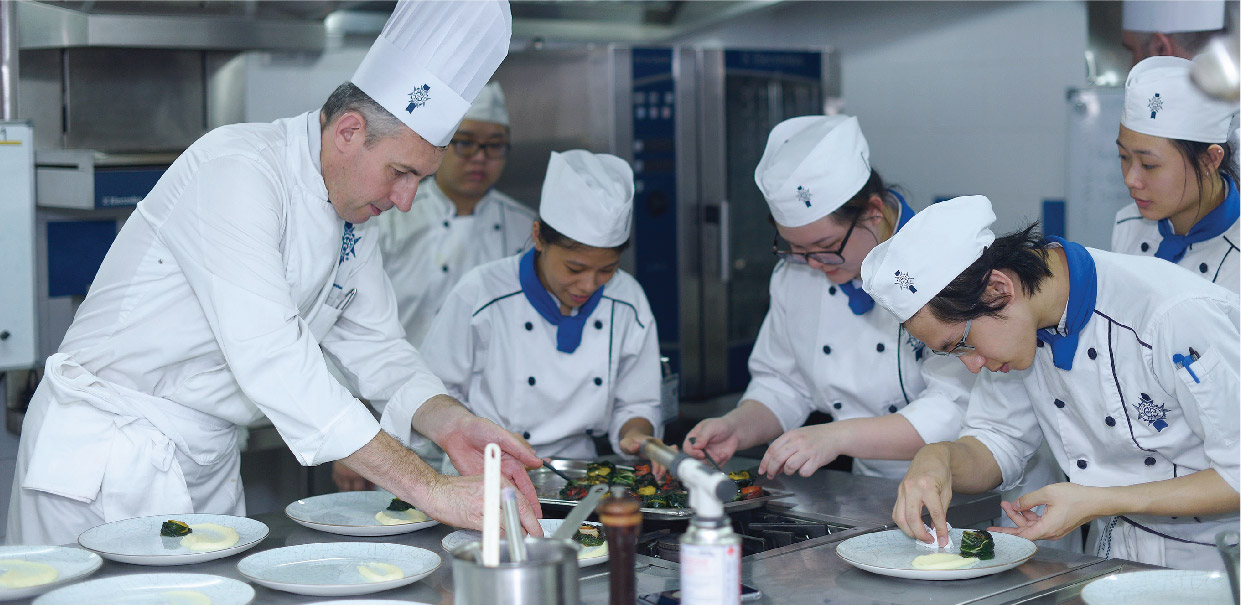The Importance of
Mise En Place
LE CORDON BLEU MALAYSIA

Anyone who has ever set foot in the kitchen, even if it’s just to fry an onion omelette, knows that there are certain things you must do before starting.
For instance, you’ll probably want to get your pan ready, take the eggs out from the fridge, and have your oil or butter at hand before you start cooking. And, you need to cut your onions first, otherwise, you might find your timing completely thrown off. As the oil overheats in the pan and your egg starts to burn at the edges, you may be still struggling to cut the onions and looking for the salt and pepper.
If you’re a home cook, it’s probably not a big deal. However, in a commercial kitchen, it’s crucial that the ingredients and utensils are all well prepped before you start cooking.
There’s actually a French term for this – mise en place, pronounced “Meez-ahn-plahs” - it basically means to “put in place”. This refers to organising and preparing the ingredients and all the other components needed before cooking.

This principle is essential if you want to be a professional chef. In fact, Sunway Le Cordon Bleu has a full course dedicated to teaching aspiring chefs the importance of mise en place.
Before starting, the chef (or the assistant) gathers and prepares all the necessary ingredients – the vegetables should be washed and chopped beforehand, and the meat cuts already taken out to thaw much earlier, trimmed and marinated. The seasoning and sauces needed must be close at hand, and the necessary utensils such as pots, pans, ladles and knives must all be within easy reach at the workstation.
A good illustration of this can be seen on cooking shows where all the ingredients and tools which the chef needs are already well-prepared beforehand and you never see the him fumbling for a knife or searching for garlic in front of the camera. That’s because before filming began, the chef and his crew would have conducted their mise en place already.
In a professional kitchen, chefs have to produce a whole slew of dishes ranging from appetisers, entrees and desserts. And, in a popular restaurant, they probably have to cook over a hundred dishes in just one night. Amazingly, everything runs smoothly and that is because every station in the kitchen would have spent hours doing their mise en place earlier in the day.

The concept of mise en place is about anticipating what is needed for the dish. Professional chefs who master the art of mise en place are in control of their kitchen and know exactly what is going on. Ultimately, by doing this extra bit of preparation, it will save time and ensure that no ingredient or seasoning is forgotten when cooking.
As part of mise en place, these are some of the essential tools to consider:
- Kitchen utensils such as ladles, tongs, spatulas, scoops and spoons. Bear in mind that different dishes might need a different set of tools so you need to anticipate this too.
- To a chef, a good knife is the most important tool. You need to have knives of several sizes for different uses.
- Mixing bowls for adding seasoning or salad dressing.
- To the home cook, a thermometer is unheard of but to a professional chef, it is an indispensable item in the kitchen.
- Different cutting boards for different foods, to prevent contamination.
- Cookware – this goes without saying as you need clean pans and pots ready at hand without wasting time waiting for a pan to be washed.
- Tools for plating – this includes squeeze bottles, tweezers, small spoons.
- Disposable gloves
Check out the culinary arts and management courses here at Le Cordon Bleu Malaysia at Sunway.
Grand Diplôme - https://www.cordonbleu.edu/malaysia/grand-diploma/en
Diplôme de Cuisine - https://www.cordonbleu.edu/malaysia/cuisine/en
Diplôme de Pâtisserie - https://www.cordonbleu.edu/malaysia/patisserie/en
Diplôme de Boulangerie - https://www.cordonbleu.edu/malaysia/diplome-de-boulangerie/en
For more information about our programmes please WhatsApp us at 019-305 2586 or email to malaysia@cordonbleu.edu



